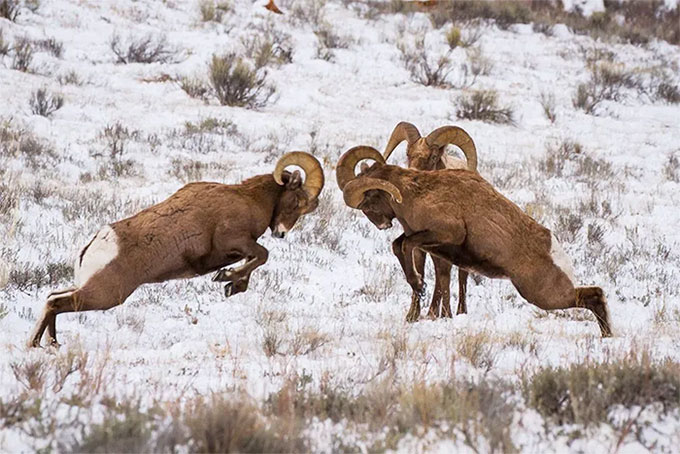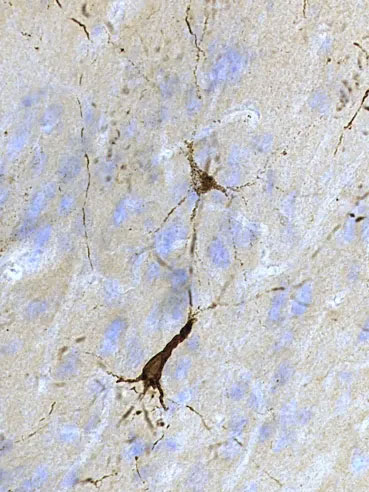When watching headbutting matches between horned animals like musk oxen or bighorn sheep, we often think that regardless of the outcome, those heads will remain unscathed. However, recent studies show that they do sustain injuries and can suffer from concussions or serious head trauma.
The research published in the journal Acta Neuropathologica not only challenges our long-held beliefs but also provides a foundation for deeper understanding of similar injuries in humans.

Animals also suffer from brain injuries like humans
Dr. Nicole Ackermans, a postdoctoral researcher at Icahn Mount Sinai and the lead researcher, stated: “Death and disability due to traumatic brain injury (TBI) is a common issue today, and the success rate of treatment is still low. If we recognize that animals also suffer from TBI like humans, we can expand the research material on this type of injury, thereby enhancing treatment capabilities.”
Ackermans and her colleagues examined the brains of three deceased musk oxen from Greenland and four bighorn sheep sourced from parks in Colorado, Utah, and the Buffalo Zoo in New York.
They chose these two species for study because they are known for their intense headbutting battles, often occurring during mating rituals or herd hierarchy disputes. For example, male musk oxen can reach speeds of up to 50 km/h before colliding. Although there have been some studies on symptoms of traumatic brain injury (TBI) in these animals, such as dizziness, no research has directly examined their brains post-conflict.
Another reason is that animals in the bovine family—such as cattle, sheep, bison, and the animals studied—have a folded brain structure similar to that of humans.
Dr. Patrick R. Hof, a professor of neuroscience at Icahn Mount Sinai and a senior author of the study, stated: “Our lab aims to use evolutionary processes to solve medical mysteries. One of the challenges of TBI research is that most studies have been conducted on the brains of rodents. If studied on brain structures similar to those of humans, such as those in the bovine family, the results might be more promising.”

Signs of TBI observed under a microscope after being treated with antibodies
The team then had the opportunity to access the brains of the two species mentioned above. To search for signs of TBI damage, the researchers sliced the brains into thin sections and processed the slices with antibodies designed to detect phosphorylated tau protein, a substance found in the brains of humans and mice with Alzheimer’s disease or TBI, including chronic traumatic encephalopathy (CTE).
Upon microscopic examination, they found that the antibodies stained the musk ox brain at easily detectable levels, while the bighorn sheep brain exhibited lighter staining, which could be detected with a different type of antibody. Staining processing is a method that colors the specimens, making them stand out against the background.
“We were quite surprised by the results. One of the major challenges of this type of research is that we do not know if antibodies that work on humans and rodent brains are effective on other species. Finding the right type of antibody is very beneficial for research, as it demonstrates that the brain of the test subject has been affected by TBI,” Ackermans said.
Further research revealed that the prefrontal cortex of the musk ox had a higher concentration of tau protein, particularly on the surface of the cortex.
“This type of concentration is often seen in patients with CTE. Their brains may have undergone chronic, repetitive damage, a common sign in some TBI patients,” Dr. Ackermans noted.
However, the research team discovered an unusual point: an older female musk ox had staining levels about 20 times higher than an older male and stained more than five times compared to other females. This finding contradicts scientists’ arguments that TBI rates are always higher in males due to their frequent fighting. They suspect this may be due to differences in skull anatomy.
Why did the female musk ox suffer more damage than the male? Why is the brain of the bighorn sheep less affected? Can knowledge from these animals be leveraged to develop TBI treatment methods for humans? These are questions that science needs to answer before starting to treat brain injuries in humans.


















































